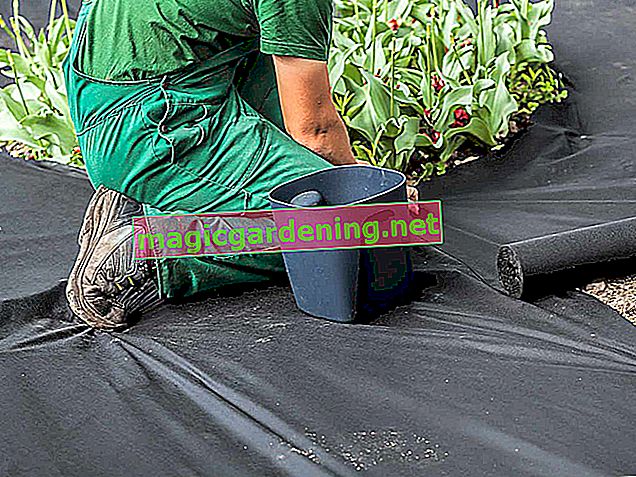
Wurzeln der Walnuss entfernen – die Möglichkeiten
Zunächst gilt es alle oberirdischen Teile des Baums zu beseitigen.
Lesen Sie auch
- Liguster-Wurzeln entfernen - Tipps und Tricks
- Weide Wurzeln entfernen- so gehen Sie vor
- So entfernen Sie Wurzeln einer Korkenzieherweide - Schäden rechtzeitig vorbeugen
Zum Entfernen der Wurzeln stehen Ihnen zwei Optionen zur Wahl:
- Sie beauftragen eine Spezialfirma.
- Sie legen selbst Hand an.
Note: Existing roots of the walnut tree can sprout again even years later. If you want to prevent this from happening, you have to remove the plexus - so you can't just leave it in place.
With regard to the specific procedure, the following methods are possible:
- Exposing and milling
- Digging and sawing
Exposing and milling
You can borrow suitable tools for milling in the well-stocked hardware store.
- Uncover the roots with a spade or mini excavator.
- Remove larger stones in the immediate vicinity. These could damage the stump grinder's cutting mechanism.
- Now remove the tree roots piece by piece with the grinder.
Note: This variant is tedious but effective.
Digging and sawing
Here, too, you can often find the tools you need to borrow from hardware stores or specialist companies. You'll need a mini digger, chainsaw, and spade (or ax).
- Use the mini digger to expose the main root stem of the walnut.
- Divide the tree roots into smaller and larger pieces. Use the chainsaw for this purpose.
- Use the mini excavator to pull the heavy pieces of root out of the ground. Proceed gently. If the roots are still firmly attached to the ground, improper use can lead to difficulties in excavating.
- Use a spade or ax to break up smaller roots.
General advice on removing the walnut tree roots
- If you are still inexperienced in using the tools mentioned, you MUST be instructed by a specialist beforehand.
- In the event of great uncertainty or intensive measures, it is advisable to entrust the task entirely to a specialist.
- If you lend a hand, you will need protective clothing including safety glasses and safety shoes.
- Let one or two people help you (or at least supervise - in case of an emergency).
- Prepare the site adequately by moving plants from the area and marking out the work surface.
- Avoid the use of explosives and the like! Aside from the fact that these methods are extremely dangerous, they also hardly work.
- Adhere to the statutory rest periods, especially if you are handling heavy, noisy equipment (lunchtime and weekends are taboo).








